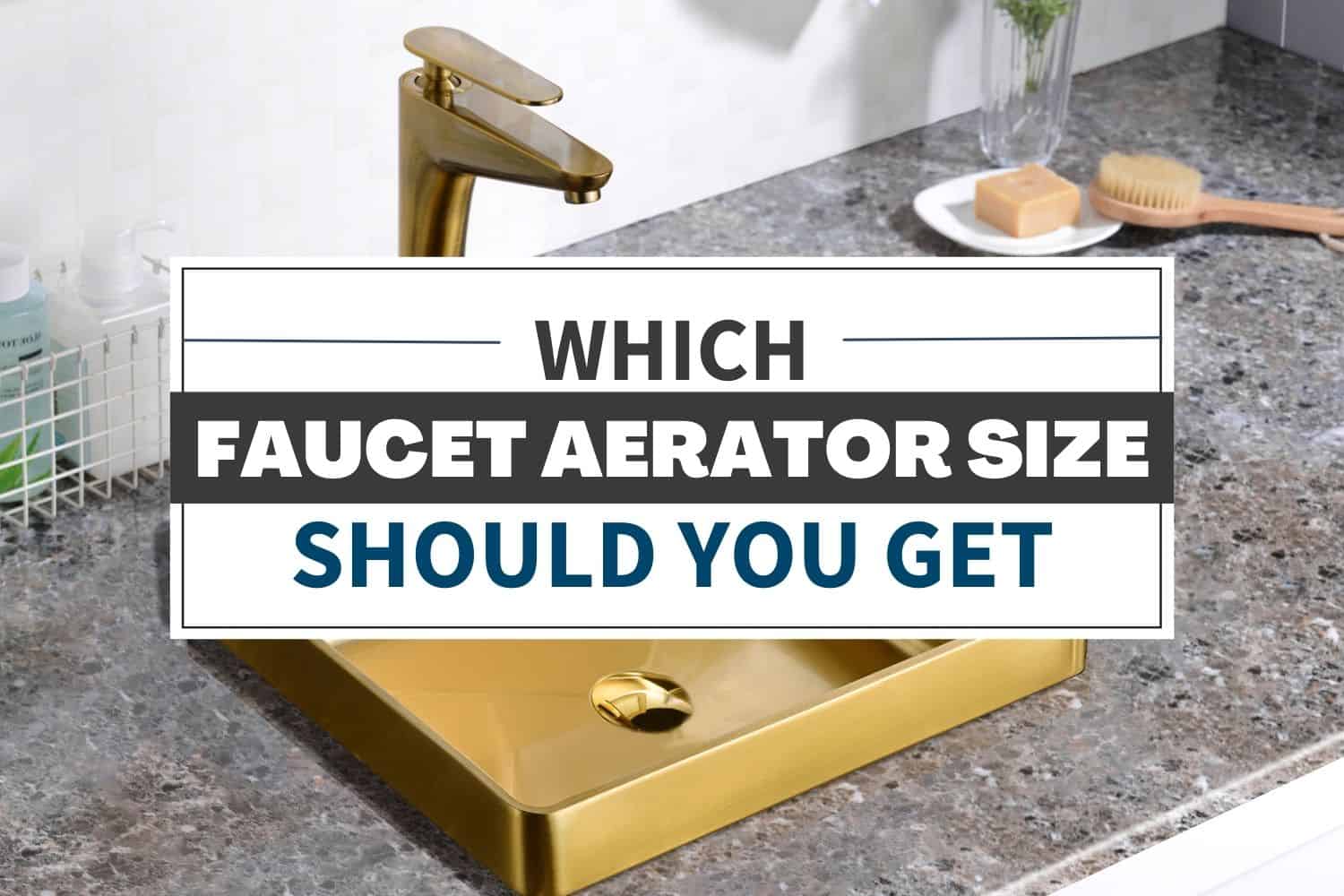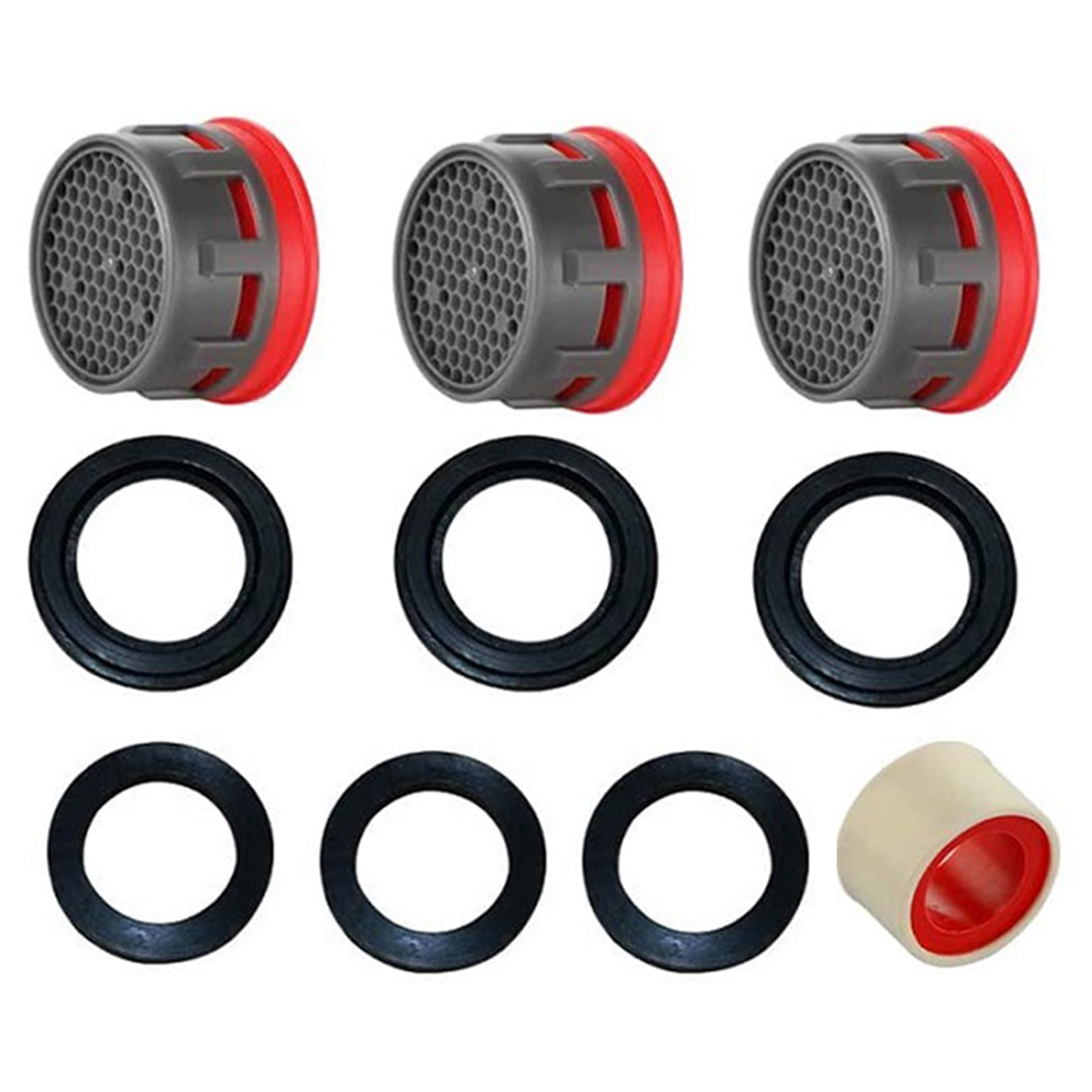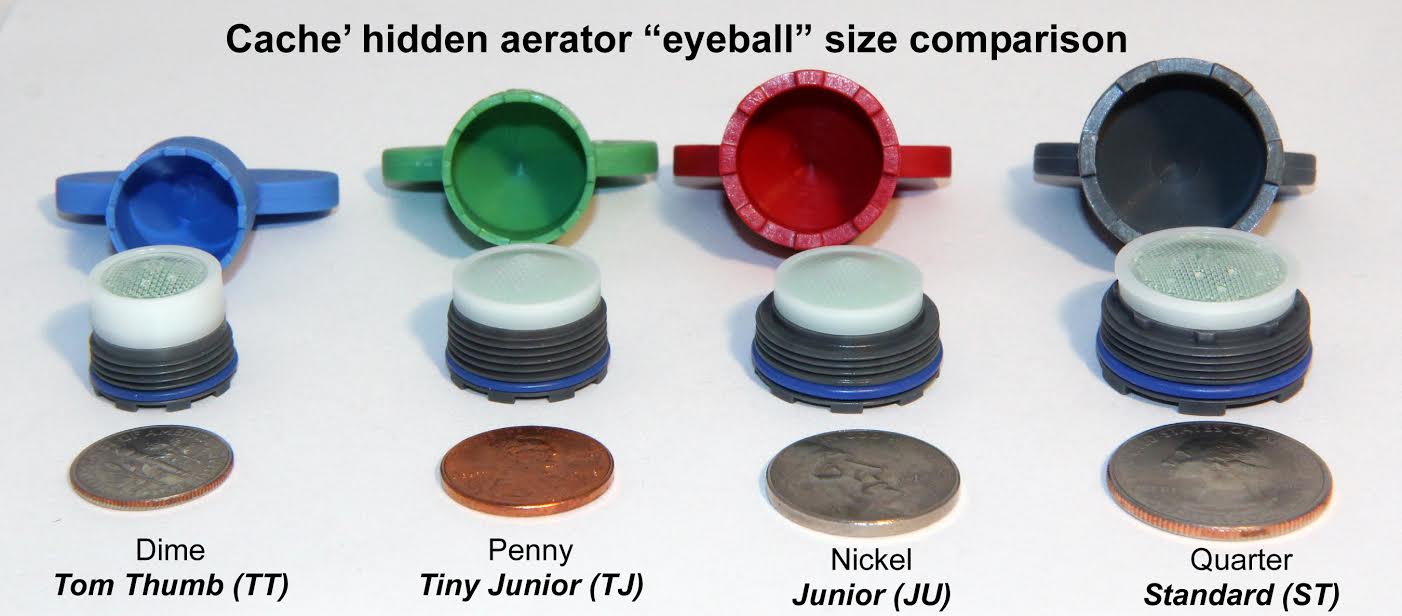Understanding Bathroom Faucet Aerators: Bathroom Faucet Aerator Sizes

Bathroom faucet aerators are small, often overlooked components that play a crucial role in enhancing the functionality and efficiency of your bathroom faucet. These devices, typically installed at the spout of the faucet, serve a multitude of purposes, ensuring a smoother, more pleasant, and ultimately more efficient water experience.
Aerator Types
Aerators come in various types, each designed to address specific needs and preferences.
- Standard Aerators: These are the most common type, blending air with water to create a smooth, consistent stream. This results in a more pleasant feel and reduces splashing.
- Flow Control Aerators: These aerators go beyond simply blending air with water. They also regulate the water flow rate, often offering multiple settings to adjust the water volume to your desired level. This can be particularly useful for conserving water.
- Spray Aerators: These aerators are designed to produce a wider, more dispersed spray pattern. This is ideal for rinsing dishes, filling larger containers, or even providing a more powerful shower-like experience.
Common Aerator Sizes

Understanding the size of your bathroom faucet aerator is crucial for optimizing water flow and ensuring a comfortable experience. Different aerators have different flow rates, which directly affect how much water comes out of your faucet. This guide explores common aerator sizes and their corresponding flow rates.
Aerator Size and Water Flow
The size of an aerator is measured in threads per inch (TPI), and it determines how much water can pass through it. A higher TPI indicates a smaller aerator opening, which restricts water flow. Conversely, a lower TPI signifies a larger opening, allowing for greater water flow.
| Size | Threads Per Inch | Flow Rate (GPM) | Typical Applications |
|---|---|---|---|
| M22 x 1 | 22 | 1.5-2.5 GPM | Standard bathroom faucets, widespread faucets, and some kitchen faucets |
| M24 x 1 | 24 | 2.0-3.0 GPM | Larger bathroom faucets, kitchen faucets, and outdoor faucets |
| M28 x 1.5 | 28 | 2.5-4.0 GPM | Commercial faucets, high-flow kitchen faucets, and some outdoor faucets |
Aerator size is directly proportional to water flow. Smaller aerators restrict water flow, while larger aerators allow for greater flow.
Choosing the Right Size
Selecting the right aerator size for your bathroom faucet is crucial for achieving optimal water flow and pressure. The ideal size depends on several factors, including the existing water pressure, desired flow rate, and the type of faucet.
Measuring the Existing Aerator Size
To determine the appropriate replacement aerator size, it’s essential to measure the existing one. This involves identifying the threads on the aerator and measuring their diameter and pitch.
- Identify the Threads: Aerators typically have either male or female threads. Male threads extend outward, while female threads are recessed inward.
- Measure the Diameter: Use a caliper or ruler to measure the outer diameter of the threads (for male threads) or the inner diameter (for female threads).
- Measure the Pitch: The pitch refers to the distance between two adjacent threads. Count the number of threads per inch (TPI) or per centimeter (TPC).
Determining the Appropriate Size for a Specific Faucet
Once you have measured the existing aerator, you can determine the appropriate size for your faucet.
- Water Pressure: High water pressure may require a larger aerator to reduce flow rate and prevent splashing. Low water pressure may necessitate a smaller aerator to maximize flow.
- Desired Flow Rate: The desired flow rate influences the aerator size. A higher flow rate generally requires a larger aerator.
- Faucet Type: Different faucet types may have different aerator sizes. For instance, widespread faucets often require larger aerators than single-handle faucets.
Installation and Maintenance

Installing and maintaining a bathroom faucet aerator is a straightforward process that can significantly improve your faucet’s performance and longevity. This section will guide you through the steps involved in installing an aerator and provide insights into common problems and solutions.
Installing a Bathroom Faucet Aerator
Replacing an existing aerator is generally a simple process that involves unscrewing the old aerator and screwing in the new one. Here’s a step-by-step guide:
- Turn off the water supply: Locate the shut-off valve for your faucet and turn it off to prevent water from spraying. You can usually find this valve underneath the sink or behind the wall.
- Remove the old aerator: Using a wrench or pliers, carefully unscrew the old aerator from the faucet spout. If the aerator is stuck, you can use a rubber grip to prevent damage to the aerator or the faucet.
- Clean the threads: Use a small brush or cloth to remove any debris or mineral deposits from the threads on the faucet spout and the aerator.
- Install the new aerator: Screw the new aerator onto the faucet spout by hand until it’s snug. You can use a wrench or pliers to tighten it further, but be careful not to overtighten, which can damage the aerator or the faucet.
- Turn on the water supply: Once the new aerator is installed, turn the water supply back on and test the faucet for leaks or other issues.
Troubleshooting Common Aerator Problems
While aerators are generally reliable, they can sometimes malfunction. Here are some common problems and solutions:
- Low water pressure: This can be caused by a clogged aerator, a buildup of mineral deposits, or a worn-out aerator. To fix this, you can clean the aerator using a small brush or soak it in vinegar to dissolve mineral deposits. If the problem persists, you may need to replace the aerator.
- Leaking aerator: This can be caused by a loose aerator, a worn-out gasket, or a damaged aerator. To fix this, tighten the aerator, replace the gasket, or replace the aerator if it’s damaged.
- Uneven water flow: This can be caused by a clogged aerator or a worn-out aerator. To fix this, clean the aerator or replace it if it’s worn out.
- Noisy water flow: This can be caused by a clogged aerator or a worn-out aerator. To fix this, clean the aerator or replace it if it’s worn out.
Maintaining Aerator Performance
To ensure your aerator continues to function optimally, regular maintenance is essential. Here are some tips for maintaining aerator performance:
- Clean the aerator regularly: Clean the aerator every few months using a small brush or soaking it in vinegar to remove mineral deposits.
- Replace the aerator as needed: Over time, aerators can wear out and need to be replaced. If your aerator is no longer functioning properly, replace it with a new one.
- Use a water softener: If you have hard water, consider using a water softener to reduce the buildup of mineral deposits in your aerator and other plumbing fixtures.
Water Conservation and Efficiency
Bathroom faucet aerators play a crucial role in water conservation by reducing water flow without compromising performance. They achieve this by mixing air with water, creating a fuller, more forceful stream that feels similar to a higher-flow faucet, but with significantly less water usage.
Impact of Aerator Size on Water Consumption, Bathroom faucet aerator sizes
The size of the aerator opening, measured in gallons per minute (GPM), directly influences water consumption. Smaller aerator openings restrict water flow, leading to lower GPM and reduced water usage. Conversely, larger aerator openings allow more water to pass through, resulting in higher GPM and increased water consumption.
Aerator Efficiency Comparison
Aerators can significantly reduce water consumption compared to traditional faucets. Here’s a comparison of water efficiency for different aerator types:
- Standard aerators: Typically reduce water flow to 1.5 GPM, saving approximately 30% compared to older faucets.
- Low-flow aerators: These aerators restrict water flow even further, often to 1.0 GPM or less, achieving water savings of up to 50% or more.
- Neoperl aerators: Known for their innovative designs and high water efficiency, Neoperl aerators can achieve flow rates as low as 0.5 GPM, offering substantial water savings.
